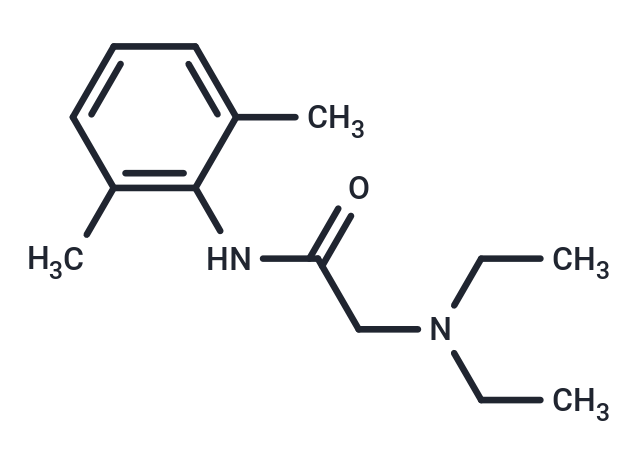Shopping Cart
- Remove All
 Your shopping cart is currently empty
Your shopping cart is currently empty

Lidocaine (Alphacaine) is an amide local anesthetic with anti-inflammatory properties in vitro and in vivo. It has this functions perhaps due to an attenuation of intracellular adhesion molecule-1 (ICAM-1), pro-inflammatory cytokines, and reduction of neutrophils influx.

| Pack Size | Price | Availability | Quantity |
|---|---|---|---|
| 500 mg | $45 | In Stock |
| Description | Lidocaine (Alphacaine) is an amide local anesthetic with anti-inflammatory properties in vitro and in vivo. It has this functions perhaps due to an attenuation of intracellular adhesion molecule-1 (ICAM-1), pro-inflammatory cytokines, and reduction of neutrophils influx. |
| Targets&IC50 | H1 receptor:>32 μM |
| Alias | Xylocaine, Lignocaine, Alphacaine |
| Molecular Weight | 234.34 |
| Formula | C14H22N2O |
| Cas No. | 137-58-6 |
| Storage | keep away from direct sunlight | Powder: -20°C for 3 years | In solvent: -80°C for 1 year | Shipping with blue ice. | ||||||||||||||||||||||||||||||||||||||||
| Solubility Information | DMSO: 50 mg/mL (213.37 mM) H2O: 21.34 mM | ||||||||||||||||||||||||||||||||||||||||
Solution Preparation Table | |||||||||||||||||||||||||||||||||||||||||
H2O/DMSO
DMSO
| |||||||||||||||||||||||||||||||||||||||||

Copyright © 2015-2024 TargetMol Chemicals Inc. All Rights Reserved.